 January 14, 2021 John E. Ross, KD8IDJ, Editor
| ||||||
Dayton Hamvention Cancels 2021 Show Dayton Hamvention® has been canceled for the second year. "Unfortunately, several setbacks in the recovery from the COVID-19 pandemic make necessary the difficult decision to cancel Hamvention 2021," a January 11 announcement from the Hamvention Executive "Hundreds of volunteers have been working to do everything necessary to bring this Hamvention to the many amateur radio enthusiasts and vendors who support the Dayton Hamvention," the committee continued. "Vaccine distribution both in the United States and around the world is lagging behind what was planned. In addition, the emergence of a more communicable form of the COVID-19 virus increases the potential for further public health problems in the next few months. We make this difficult decision for the safety of our guests and vendors." Tickets deferred last year will be deferred again until 2022. The Hamvention Committee hinted at a QSO party for Hamvention weekend. In November, Hamvention had announced that "The Gathering" would be the theme for the 2021 show. Hamvention is the largest annual amateur radio gathering in the US, and was the host of the ARRL National Convention for its last event, held in 2019. The ARRL Hamfest and Convention Calendar includes a searchable database that includes other canceled in-person events. FCC Invites Comments on Expanding the Number of Volunteer Examiner Coordinators In a January 5 Public Notice, the FCC requested comments on whether the current 14 Volunteer Examiner Coordinators (VECs) are sufficient to facilitate the efforts of their accredited Volunteer Examiners (VEs) in administering amateur radio examinations, or whether it should authorize up to five additional VECs. Comments are due by February 5, and reply comments are due by February 19. After Congress authorized it to do so, the FCC adopted rules in 1983 to "VECs introduced consistency into the volunteer examiner program by centralizing accreditation of volunteer examiners, coordinating the dates and times for scheduling examinations, and managing the various administrative tasks arising from examinations," the FCC said. Authorized VECs may operate in any of the 13 VEC regions, but must service at least one region. The FCC pointed out that some VECs now offer remote examinations. "The Commission has long maintained 14 VECs and now seeks to consider whether they continue to serve the evolving needs of the amateur community, or whether there are unmet needs that warrant considering expanding the number of VECs," the FCC said. The FCC Public Notice provided questions for framing comments:
Interested parties may file short comments on WT Docket No. 21-2 via the FCC's Electronic Comment Filing Service (Express). Visit the FCC's "How to Comment on FCC Proceedings" page for information on filing extended comments. WSJT-X 2.4.0 to Introduce New Digital Protocol Q65 WSJT-X version 2.4.0 will introduce a new digital protocol called Q65, which, according to the Quick Start Guide, is designed for "minimal two-way QSOs over especially difficult propagation paths." The Guide said, "On paths with Doppler spread more than a few hertz, the weak-signal performance of Q65 is the best among all WSJT-X modes. Q65 is The new protocol uses 65-tone frequency-shift keying and builds on the demonstrated weak-signal strengths of QRA64, introduced in 2016. User messages and sequencing are identical to those in FT4, FT8, FST4, and MSK144. Q65 employs a "unique tone" to sync time and frequency. "As with JT65, this 'sync tone' is readily visible on the waterfall spectral display," the Guide said. "Unlike JT65, synchronization and decoding are effective even when meteor pings or other short signal enhancements are present. Transmit/receive sequence lengths of 15, 30, 60, 120, and 300 seconds are available. According to the Guide, "Q65 will enable stations with a modest Yagi and 100 W or more and to work one another on 6 meters at distances up to ~1,600 kilometers at most times, in dead-band conditions." ARRL Podcasts Schedule
The latest edition of Eclectic Tech (Episode 25) will The On the Air and Eclectic Tech podcasts are sponsored by Icom. Both podcasts are available on iTunes (iOS) and Stitcher (Android), as well as on Blubrry -- On the Air | Eclectic Tech. ARRL Seeks Nominations for Seven Awards ARRL invites nominations for awards that recognize excellence in amateur radio educational, technological, and public relations pursuits. Nominations are also open for the Hiram Percy Maxim Award, ARRL's premier award to honor a young licensee. The Hiram Percy Maxim Award The Hiram Percy Maxim Award is the premier honor for a radio amateur and ARRL member younger than 21 whose accomplishments and contributions are of the most exemplary nature within the framework of amateur radio activities. Nominations must be made through your ARRL Section Manager, who will forward nominations to ARRL Headquarters by March 31, 2021. Nomination forms and supporting information should document as thoroughly as possible the nominee's amateur radio achievements and contributions during the previous calendar year. The ARRL Herb S. Brier Instructor of the Year Award
Technical Awards The ARRL Microwave Development Award pays tribute to a radio amateur or group of radio amateurs who contribute to the development of the amateur radio microwave bands. The nomination deadline is March 31, 2021. The ARRL Technical Service Award recognizes a radio amateur or group of radio amateurs who provide amateur radio technical assistance or training to others. The nomination deadline is March 31, 2021. The ARRL Technical Innovation Award commends a radio amateur or group of radio amateurs who develop and apply new technical ideas or techniques in amateur radio. The nomination deadline is March 31, 2021. The Knight Distinguished Service Award The Knight Distinguished Service Award honors exceptional contributions by an ARRL Section Manager to the health and vitality of ARRL. The nomination deadline is April 30, 2021. It was named for Joe T. Knight, W5PDY (SK), who was commended for his exemplary service not only as ARRL New Mexico Section Manager for more than a quarter-century, but for his willingness to share his knowledge and leadership skills. The Philip J. McGan Memorial Silver Antenna Award The ARRL Public Relations Committee invites nominations for the Philip J. McGan Memorial Silver Antenna Award. This award recognizes and honors the efforts of an ARRL member-volunteer who demonstrates success in amateur radio public relations and creates greater awareness and understanding for amateur radio through efforts focused on the media and general public. The nomination deadline is May 14, 2021. The ARRL Board of Directors makes the final determination of award recipients. Winners typically are announced following the Board's July meeting. More information about these awards is on the ARRL website, or contact Steve Ewald, WV1X, at ARRL Headquarters (telephone 860-594-0265). International Amateur Radio Union Preparing for WRC-23 Preparations are under way by the International Amateur Radio Union (IARU) to represent the interests of the amateur and amateur-satellite services at World Radiocommunication Conference 2023 (WRC-23). The International Telecommunication Union (ITU) sponsors WRCs, typically every 4 years, to consider revisions to the international Radio Regulations that define frequency allocations for various radio services. "As an incumbent radio service with allocations at intervals throughout the radio spectrum, the amateur service faces challenges at every WRC," IARU Secretary David Sumner, K1ZZ, said. "Successfully defending our existing access to the spectrum is a significant The next WRC is expected to be held in 2023. Under the direction of IARU Vice President Ole Garpestad, LA2RR, 20 IARU volunteers have been participating in virtual meetings of ITU working parties and preparatory committees of regional telecommunications organizations (RTOs) as they address WRC-23 agenda items of particular concern to amateur radio. Potentially affected bands are 50 - 54 MHz (a new service has been proposed in an adjacent band); 1240 - 1300 MHz; 3300 - 3400 MHz; 10.0 - 10.5 GHz, and 241 - 250 GHz. In addition, studies are being conducted to identify protection requirements for space weather sensors that operate in frequency bands from 13 kHz to at least 15 GHz. The participation of IARU member-societies in preparations at the national level is an important contribution to amateur radio's eventual success at a WRC, Sumner said. The IARU Administrative Council has chosen "Amateur Radio: Home but Never Alone" as the theme for World Amateur Radio Day on Sunday, April 18, 2021. With the pandemic driving adoption of physical isolation to reduce the spread of the virus, the worldwide amateur radio community has responded positively to overcome the resulting social isolation. On-air activity was at an unprecedented level throughout the remainder of 2020, with record-breaking numbers of entries in the major contests, Sumner said. "This theme offers the opportunity for our member-societies to tailor meaningful messages to the general public about the values of the global amateur radio community." ARRL Learning Network Webinars Visit the ARRL Learning Network (a members-only benefit) to register, check on upcoming webinars, and to view previously recorded sessions. The schedule is subject to change. Emergency Communications: Why Train? -- North Texas Section Emergency Coordinator Greg Evans, K5GTX Utilizing amateur radio operators in an emergency communication situation is a key function that can save Thursday, January 21, 2021, 12:30 PM PST / 3:30 PM EST (2030 UTC) Easy Helical Copper Tape and PVC 2-Meter Vertical Antenna -- John Portune, W6NBC Here's how to quickly build a tiny, 18-inch, continuously loaded lightweight portable or base station 2-meter omnidirectional vertical antenna with performance and efficiency comparable to a 5-foot J-pole. The antenna is built from hardware store copper tape and PVC pipe, and the cost is roughly $10. It's an easy afternoon's homebrew project, ideal for the new ham but equal to the experienced ham's needs. It's great for events like bike-a-thons. It also makes an excellent ham radio club hands-on building project, and the design is adaptable to other bands. Tuesday, February 2, 2021, 10 AM PST / 1 PM EST (1800 UTC) Interesting Stories about Ham Radio & Weather Spotting -- Rob Macedo, KD1CY One of the most critical ways amateur radio supports agencies such as the National Weather Service (NWS), National Hurricane Center (NHC), and emergency management is through weather spotting via the NWS SKYWARN program. This presentation reviews some interesting stories about how amateurs involved in SKYWARN have saved lives and property and why this is an important amateur radio activity. Thursday February 11, 2021 @ 8 pm EST (0100 UTC on Friday, February 12) Announcements
ARRL Life Member Neil Rapp, WB9VPG, is 2021 Carole Perry Educator of the Year Orlando HamCation® has announced that ARRL Life Member Neil Rapp, WB9VPG, of Bloomington, Indiana, is the 2021 recipient of the Carole Perry Educator of the Year Award. The award recognizes an outstanding individual contribution in educating and advancing youth in amateur radio. It was first awarded in 2018 to its namesake, Carole Perry, WB2MGP, in honor of her work as an educator teaching students about ham radio. Rapp was ARRL 2004 Professional An educational professional for more than 28 years, Rapp currently teaches chemistry at Bloomington High School South. He's also the school's amateur radio club sponsor and has introduced 3,600 students and parents to amateur radio through his involvement in the organization. Among his educational achievements, he was able to send an experiment involving protein crystallization to the International Space Station (ISS). He also mentored 2013 Amateur Radio Newsline Young Ham of the Year and ARRL William R. Goldfarb Memorial Scholarship recipient Padraig Lysandrou, KC9UUS. Rapp got his license when he was 5 years old, and, at the time, was touted as the world's youngest ham. Now 50, he's the host and founder of the amateur radio podcast Ham Talk Live! He's also a member of AMSAT and was the youngest person to both join and be eligible for membership in the Quarter Century Wireless Association (QCWA). He is the editor of the "Next-Gen Contesters" column for NCJ. Seven US Schools Move Forward in ARISS Selection Process Amateur Radio on the International Space Station (ARISS) has announced that seven schools or host organizations selected for the July - December 2021 contact window have moved forward in the processes of planning to host a scheduled amateur radio contact with a space station crew member. ARISS' primary goal is to engage young people in science, technology, engineering, arts, and math (STEAM) activities and raise their awareness of space communications, radio communication, space exploration, and related areas of study and career possibilities. The schools/organizations are:
ARISS is now working with hosts to complete acceptable equipment plans that demonstrate their ability to carry out a ham radio contact. Once their equipment plan is approved by the ARISS Technical Mentors, the final list of host schools/organizations will be scheduled as their availability and flexibility match up with contact opportunities offered by NASA. This year, ARISS celebrates 20 years of continuous amateur radio operations on the ISS. The K7RA Solar Update Tad Cook, K7RA, Seattle, reports: Solar Cycle 25 seemed well under way, but no new sunspots emerged since December 23. The last time any sunspot was visible was January 2. Average daily solar flux declined from 78.6 to 73.8. Geomagnetic A index remained quiet. Predicted solar flux for the next 30 days is 73, Predicted planetary A index is 5 on January 14 - 16; 10, 12, 10, and 8 on January 17 - 20; 5 on January 21 - 24; 8 on January 25 - 26; 5 on January 27 - 31; 10 on February 1 - 2, and 5 on February 3 - 12. Peering at the STEREO spacecraft, I see a promising bright spot a few days from now in our sun's southern hemisphere, so perhaps that indicates a new sunspot over the solar horizon. Space Weather Woman Tamitha Skov, WX6SWW, has posted this video discussing the lack of sunspots and the latest space weather news. Carl Luetzelschwab, K9LA, gave an excellent talk on propagation for the Madison DX Club on January 12. The video will be posted soon. Until then, you can watch a presentation on Solar Cycle 25 by Douglas Biesecker of NOAA via the same link. Sunspot numbers for January 7 - 13 were 0, 0, 0, 0, 0, 0, and 0, with a mean of 0. The 10.7-centimeter flux was 74.6, 75.2, 74.2, 73.1, 73.2, 72.8, and 73.2, with a mean of 73.8. Estimated planetary A indices were 6, 2, 3, 3, 14, 9, and 4, with a mean of 5.9. Middle latitude A index was 4, 1, 2, 3, 10, 8, and 3, with a mean of 4.4. A comprehensive K7RA Solar Update is posted Fridays on the ARRL website. For more information concerning radio propagation, visit the ARRL Technical Information Service, read "What the Numbers Mean...," and check out K9LA's Propagation Page. A propagation bulletin archive is available. For customizable propagation charts, visit the VOACAP Online for Ham Radio website. Share your reports and observations. In Brief...
The 2021 AM Rally is set for the first weekend in February. The popular event takes place from 0000 UTC on Saturday, February 6 to 0700 UTC on Monday, February 8. The annual AM Rally operating event encourages all operators to explore amateur radio's original voice mode by showcasing the various types of amplitude modulation equipment in use today, ranging from early vacuum-tube radios to the latest SDR-based transceivers. "Participation in the AM Rally has continued to grow over the past 5 years, as more operators explore the mode," said Clark Burgard, N1BCG. "The AM Rally is a great way to beat the winter and COVID-19 blues." The AM Rally is open to all radio amateurs capable of operating on AM using any type of radio equipment from vintage to modern, vacuum tube to solid state. The AM Rally will use the 160-, 80-, 40-, 20-, 15-, 10-, and 6-meter bands. "Those who have never tried AM mode will find plenty of help, if needed," Burgard assured. An AM Rally 2021 promotional video is available. Contact Burgard for more information.
Just Ahead in Radiosport
Upcoming ARRL Section, State, and Division Conventions Many conventions and hamfests have been canceled or postponed due to the coronavirus pandemic. Check the calendar of canceled events on the ARRL website.
Find conventions and hamfests in your area.
ARRL -- Your One-Stop Resource for . .
Subscribe to...
Free of charge to ARRL members...
| ||||||
 Committee said. Sponsored by the Dayton Amateur Radio Association (
Committee said. Sponsored by the Dayton Amateur Radio Association (.png) allow volunteers to prepare and administer amateur radio examinations, and it established the system of VECs and VEs. The ARRL VEC is the largest of the 14 VECs in the US.
allow volunteers to prepare and administer amateur radio examinations, and it established the system of VECs and VEs. The ARRL VEC is the largest of the 14 VECs in the US..JPG) particularly effective for tropospheric scatter, ionospheric scatter, and EME on VHF and higher bands, as well as other types of fast-fading signals."
particularly effective for tropospheric scatter, ionospheric scatter, and EME on VHF and higher bands, as well as other types of fast-fading signals.".jpg) The latest episode of the On The Air podcast (Episode 13) features a discussion with Curt Laumann, K7ZOO, about his success in boosting activity at the University of Arizona amateur radio club.
The latest episode of the On The Air podcast (Episode 13) features a discussion with Curt Laumann, K7ZOO, about his success in boosting activity at the University of Arizona amateur radio club.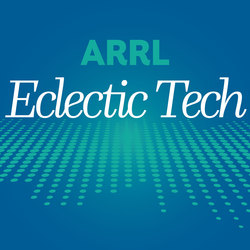 discuss extreme magnetic fields and also feature a chat with Bob Allison, WB1GCM, on the topic of hunting down and resolving interference.
discuss extreme magnetic fields and also feature a chat with Bob Allison, WB1GCM, on the topic of hunting down and resolving interference..jpg) This award honors an ARRL volunteer amateur radio instructor or professional classroom teacher who uses creative instructional approaches and reflects the highest values of the amateur radio community. The award highlights quality of -- and commitment to -- licensing instruction. Nominations are due by March 15, 2021.
This award honors an ARRL volunteer amateur radio instructor or professional classroom teacher who uses creative instructional approaches and reflects the highest values of the amateur radio community. The award highlights quality of -- and commitment to -- licensing instruction. Nominations are due by March 15, 2021..JPG) accomplishment at any WRC, but sometimes it is possible also to improve our existing allocations. WRC-19 resulted in major improvements in 50 MHz allocations in Region 1. Without any doubt, this could not have happened without the concerted efforts of dozens of IARU volunteers over the course of several years."
accomplishment at any WRC, but sometimes it is possible also to improve our existing allocations. WRC-19 resulted in major improvements in 50 MHz allocations in Region 1. Without any doubt, this could not have happened without the concerted efforts of dozens of IARU volunteers over the course of several years."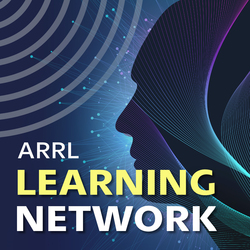 lives. We must be able to respond to the needs of our served agencies quickly and responsibly. Topics covered include the Incident Command System and its relevance; building on consistent training; interoperability with multiple communication providers; interoperability with VOAD and partners, and Mission One: get the information delivered.
lives. We must be able to respond to the needs of our served agencies quickly and responsibly. Topics covered include the Incident Command System and its relevance; building on consistent training; interoperability with multiple communication providers; interoperability with VOAD and partners, and Mission One: get the information delivered. minutes."
minutes.".jpg) The FCC's Enforcement Bureau
The FCC's Enforcement Bureau  Educator of the Year. He's an Assistant Central Division Director and an ARRL VEC certified examiner.
Educator of the Year. He's an Assistant Central Division Director and an ARRL VEC certified examiner.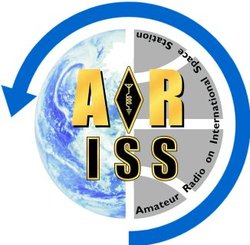 ry School in Chandler, Arizona
ry School in Chandler, Arizona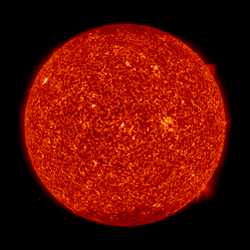 73, and 74 on January 14 - 16; 75 on January 17 - 19; 73 and 75 on January 20 - 21; 78 on January 22 - 27; 77 on January 28 - 31; 75 on February 1 - 6, and 74 on February 7 - 12. Solar flux is expected to peak at 78 again after February 14.
73, and 74 on January 14 - 16; 75 on January 17 - 19; 73 and 75 on January 20 - 21; 78 on January 22 - 27; 77 on January 28 - 31; 75 on February 1 - 6, and 74 on February 7 - 12. Solar flux is expected to peak at 78 again after February 14.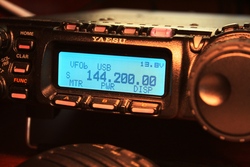 The
The 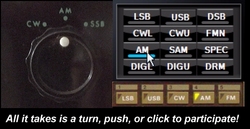
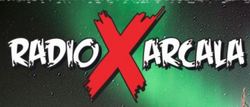 Northernmost Reverse Beacon Net Node in Europe Launched Thanks to a grant from the Yasme Foundation, the northernmost Reverse Beacon Net (
Northernmost Reverse Beacon Net Node in Europe Launched Thanks to a grant from the Yasme Foundation, the northernmost Reverse Beacon Net (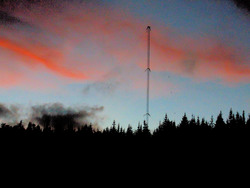 New Amateur VLF Transatlantic Record Set Very low frequency (VLF) enthusiast Joe Craig, VO1NA, reports that Stefan Schaefer, DK7FC, copied his 50-character message transmitted from Newfoundland on 8.271 kHz, with a radiated power of 10 mW. "This is a new record for amateur transatlantic VLF," Craig told ARRL. "The mode used was
New Amateur VLF Transatlantic Record Set Very low frequency (VLF) enthusiast Joe Craig, VO1NA, reports that Stefan Schaefer, DK7FC, copied his 50-character message transmitted from Newfoundland on 8.271 kHz, with a radiated power of 10 mW. "This is a new record for amateur transatlantic VLF," Craig told ARRL. "The mode used was .jpg)








